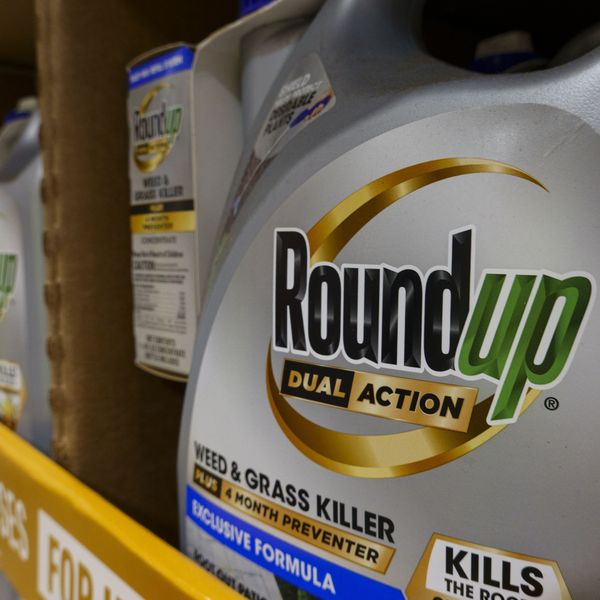Methane-Explosion Craters Could Be Latest Indicators of a Warming Planet
Newly discovered funnels in Siberia are believed to have been created by methane gases bursting through a thawing permafrost.
Numerous newly discovered massive craters across Siberia--believed to have been formed by methane gas exploding through a thawing permafrost--may be the latest visible signs that climate change is here, and it's changing the very contours of the earth's surface.
A 100-foot crater was first spotted last summer in Yamal peninsula, a freezing cold land 2,000 miles north of Moscow, and two other funnels were discovered soon after.
While it is not entirely clear what caused the blowholes, the dominant theory, as summarized by Washington Post writer Terrence McCoy, is: "Global warming had thawed the permafrost, which had caused methane trapped inside the icy ground to explode."
In a new development, the Siberian Times reported this week that such funnels, in fact, are "more widespread than was first realized."
"We know now of seven craters in the Arctic area," Professor Vasily Bogoyavlensky, deputy director of the Moscow-based Oil and Gas Research Institute, part of the Russian Academy of Sciences, told the paper. "Five are directly on the Yamal peninsula, one in Yamal Autonomous district, and one is on the north of the Krasnoyarsk region, near the Taimyr peninsula."
In addition, satellite images reveal that one large hole is surrounded by up to 20 "mini-craters," the Siberian Times notes. Many more yet-undiscovered craters are believed to still be out there, say researchers.
"It is important not to scare people, but to understand that it is a very serious problem and we must research this," said Bogoyavlensky. "We must research this phenomenon urgently, to prevent possible disasters."
As McCoy points out, the bursts of methane--a highly flammable gas--are themselves dangerous, and many researchers are frightened to study the funnels as a result.
However, perhaps most alarming is what the funnels reveal about the rising temperature the Arctic, which is heating twice as fast as the rest of the planet.
An Urgent Message From Our Co-Founder
Dear Common Dreams reader, The U.S. is on a fast track to authoritarianism like nothing I've ever seen. Meanwhile, corporate news outlets are utterly capitulating to Trump, twisting their coverage to avoid drawing his ire while lining up to stuff cash in his pockets. That's why I believe that Common Dreams is doing the best and most consequential reporting that we've ever done. Our small but mighty team is a progressive reporting powerhouse, covering the news every day that the corporate media never will. Our mission has always been simple: To inform. To inspire. And to ignite change for the common good. Now here's the key piece that I want all our readers to understand: None of this would be possible without your financial support. That's not just some fundraising cliche. It's the absolute and literal truth. We don't accept corporate advertising and never will. We don't have a paywall because we don't think people should be blocked from critical news based on their ability to pay. Everything we do is funded by the donations of readers like you. Will you donate now to help power the nonprofit, independent reporting of Common Dreams? Thank you for being a vital member of our community. Together, we can keep independent journalism alive when it’s needed most. - Craig Brown, Co-founder |
Numerous newly discovered massive craters across Siberia--believed to have been formed by methane gas exploding through a thawing permafrost--may be the latest visible signs that climate change is here, and it's changing the very contours of the earth's surface.
A 100-foot crater was first spotted last summer in Yamal peninsula, a freezing cold land 2,000 miles north of Moscow, and two other funnels were discovered soon after.
While it is not entirely clear what caused the blowholes, the dominant theory, as summarized by Washington Post writer Terrence McCoy, is: "Global warming had thawed the permafrost, which had caused methane trapped inside the icy ground to explode."
In a new development, the Siberian Times reported this week that such funnels, in fact, are "more widespread than was first realized."
"We know now of seven craters in the Arctic area," Professor Vasily Bogoyavlensky, deputy director of the Moscow-based Oil and Gas Research Institute, part of the Russian Academy of Sciences, told the paper. "Five are directly on the Yamal peninsula, one in Yamal Autonomous district, and one is on the north of the Krasnoyarsk region, near the Taimyr peninsula."
In addition, satellite images reveal that one large hole is surrounded by up to 20 "mini-craters," the Siberian Times notes. Many more yet-undiscovered craters are believed to still be out there, say researchers.
"It is important not to scare people, but to understand that it is a very serious problem and we must research this," said Bogoyavlensky. "We must research this phenomenon urgently, to prevent possible disasters."
As McCoy points out, the bursts of methane--a highly flammable gas--are themselves dangerous, and many researchers are frightened to study the funnels as a result.
However, perhaps most alarming is what the funnels reveal about the rising temperature the Arctic, which is heating twice as fast as the rest of the planet.
Numerous newly discovered massive craters across Siberia--believed to have been formed by methane gas exploding through a thawing permafrost--may be the latest visible signs that climate change is here, and it's changing the very contours of the earth's surface.
A 100-foot crater was first spotted last summer in Yamal peninsula, a freezing cold land 2,000 miles north of Moscow, and two other funnels were discovered soon after.
While it is not entirely clear what caused the blowholes, the dominant theory, as summarized by Washington Post writer Terrence McCoy, is: "Global warming had thawed the permafrost, which had caused methane trapped inside the icy ground to explode."
In a new development, the Siberian Times reported this week that such funnels, in fact, are "more widespread than was first realized."
"We know now of seven craters in the Arctic area," Professor Vasily Bogoyavlensky, deputy director of the Moscow-based Oil and Gas Research Institute, part of the Russian Academy of Sciences, told the paper. "Five are directly on the Yamal peninsula, one in Yamal Autonomous district, and one is on the north of the Krasnoyarsk region, near the Taimyr peninsula."
In addition, satellite images reveal that one large hole is surrounded by up to 20 "mini-craters," the Siberian Times notes. Many more yet-undiscovered craters are believed to still be out there, say researchers.
"It is important not to scare people, but to understand that it is a very serious problem and we must research this," said Bogoyavlensky. "We must research this phenomenon urgently, to prevent possible disasters."
As McCoy points out, the bursts of methane--a highly flammable gas--are themselves dangerous, and many researchers are frightened to study the funnels as a result.
However, perhaps most alarming is what the funnels reveal about the rising temperature the Arctic, which is heating twice as fast as the rest of the planet.

